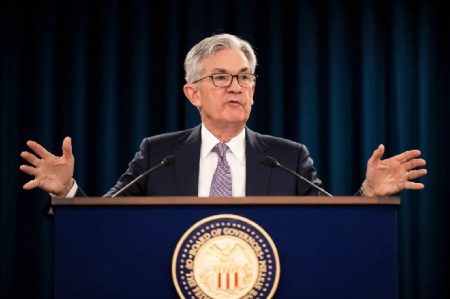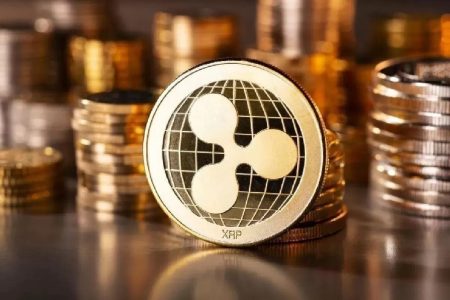Polygon Labs and DeCard Partnership Revolutionizes Stablecoin Spending Across 150 Million Global Merchants
A landmark integration transforms digital assets into everyday payment options, addressing a critical utility gap in the $300 billion stablecoin market
In a groundbreaking development set to transform the practical utility of digital currencies, Polygon Labs has formed a strategic partnership with DeCard to enable stablecoin holders to spend their digital assets at more than 150 million merchants worldwide. Announced on October 29, 2025, this collaboration represents one of the most significant expansions in stablecoin usability to date, potentially changing how millions of people interact with digital currencies in everyday transactions.
Bridging Digital Assets with Real-World Commerce
Through this innovative partnership, DeCard—which evolved from Diners Club Singapore—has integrated support for the Polygon blockchain network, enabling seamless deposits of Polygon-based stablecoins directly into DeCard and DeCard Luminaries accounts. This integration effectively eliminates the traditional barriers between blockchain-based assets and conventional payment systems, allowing customers to instantly utilize their USDT and USDC balances for real-world purchases.
“What’s the use in holding stablecoins if you can’t pay with them?” questioned Marc Boiron, CEO of Polygon Labs, in his announcement on social media. “We’re doing everything we can to make spending your own money instant and inexpensive,” he added, highlighting the fundamental practical problem the partnership aims to solve.
The timing of this integration is particularly significant as the global stablecoin market has swelled beyond $300 billion in total supply. Despite this impressive valuation, these digital assets have remained largely confined to cryptocurrency trading platforms and decentralized finance (DeFi) applications, with market analysts estimating that less than 1% of global money flows currently involve stablecoins. The DeCard-Polygon collaboration directly addresses this disparity by transforming stablecoins from speculative or investment vehicles into practical, everyday payment instruments.
Polygon’s Growing Role in the Stablecoin Ecosystem
Polygon has emerged as a formidable player in the stablecoin landscape, supporting approximately $3 billion in assets across its ecosystem. The network’s technical architecture enables micro-transactions using USDC at remarkably low fees—less than $0.001 per transaction—making it particularly suitable for everyday retail payments that were previously cost-prohibitive on other blockchain networks.
This efficiency positions Polygon as an ideal infrastructure partner for payment integrations, as transaction costs represent a critical factor in merchant adoption. The network’s growing stablecoin volume, visualized in data from DeFiLlama, demonstrates sustained growth that contrasts with fluctuations seen on other chains, reinforcing investor confidence in its long-term viability as a payment rail.
The partnership leverages Polygon’s technical advantages while utilizing DeCard’s extensive merchant network and regulatory compliance framework, creating a synergy that neither party could achieve independently. This collaboration exemplifies how strategic partnerships between blockchain technology providers and traditional financial institutions can accelerate innovation while navigating complex regulatory requirements.
October 2025: A Pivotal Month for Stablecoin Adoption
The DeCard-Polygon announcement comes amid a flurry of stablecoin developments that collectively signal a shift toward mainstream commercial adoption. Western Union, one of the world’s largest money transfer services, has reportedly begun testing stablecoin integration for international transfers and global remittances—a use case that could significantly reduce costs and settlement times for cross-border payments.
In a parallel development reflecting growing governmental interest, Japan launched its first yen-backed stablecoin designed specifically to support domestic payment infrastructure. These regional initiatives demonstrate how stablecoins are increasingly viewed as complements to, rather than competitors with, established financial systems.
This institutional momentum coincides with remarkable growth in transaction volumes, with global stablecoin transactions increasing by 70% in 2025 alone. This acceleration spans diverse sectors, from e-commerce platforms seeking reduced payment processing fees to luxury travel providers catering to crypto-affluent clientele who prefer to transact directly from their digital wallets.
Merging Blockchain Efficiency with Traditional Payment Rails
“The collaboration makes stablecoins truly usable in everyday life. It’s a step toward mainstream financial freedom through blockchain technology,” explained Polygon Labs CEO Marc Boiron, emphasizing the broader implications of the partnership beyond mere payment functionality.
Joan Han, DeCard’s Chief Operating Officer, elaborated on the user experience aspects, noting that the initiative focuses on making stablecoin transactions “as intuitive as any other form of payment.” This emphasis on user experience represents a crucial evolution in the cryptocurrency space, which has historically prioritized technical innovation over accessibility.
The integration also reflects a broader industry trend toward merging blockchain efficiency with regulated payment systems. Rather than attempting to replace traditional financial infrastructure, forward-thinking blockchain companies are increasingly focusing on interoperability—creating bridges between decentralized assets and established payment networks.
Implications for the Future of Digital Payments
Financial analysts and blockchain experts view the DeCard-Polygon partnership as potentially transformative for both industries. For cryptocurrency holders, the ability to seamlessly spend digital assets without first converting to fiat currencies removes a significant friction point that has hindered practical adoption. For merchants and payment processors, the integration opens access to a growing customer segment with substantial digital holdings seeking convenient spending options.
The collaboration also positions both companies advantageously amid increasing competition from traditional financial institutions entering the digital asset space. As major banks and payment networks develop their own blockchain initiatives, partnerships that combine technical innovation with established merchant relationships may prove critical for maintaining competitive advantage.
Looking ahead, observers expect continued growth in cross-border and retail payment use cases as more merchants and financial institutions adopt stablecoin settlement options. The reduced costs, increased settlement speed, and programmability of blockchain-based payments present compelling advantages over legacy systems, particularly for international commerce.
As stablecoins transition from speculative assets to practical payment instruments, partnerships like the DeCard-Polygon integration may well represent the blueprint for how digital currencies ultimately achieve mainstream adoption—not by replacing traditional finance, but by seamlessly integrating with and enhancing existing payment infrastructure to create more efficient, accessible financial tools for global commerce.














